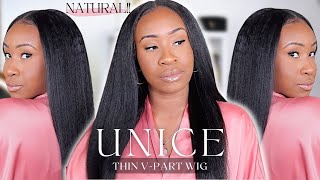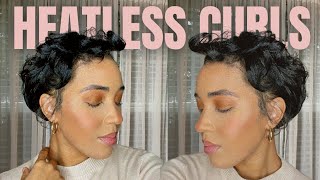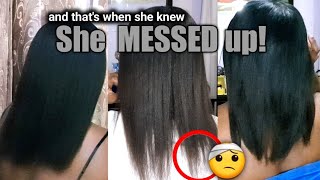Stretching Relaxers: Do’s And Don’t
 For our girls who are wearing a relaxer you might be thinking about doing a little stretching. When getting relaxers, it’s recommended that you wait at least twelve weeks between touch-ups; that’s about three months. By that time most people have a significant amount of new growth to minimize the chances of the relaxer over-lapping, and therefore over processing the previously relaxed strands.
For our girls who are wearing a relaxer you might be thinking about doing a little stretching. When getting relaxers, it’s recommended that you wait at least twelve weeks between touch-ups; that’s about three months. By that time most people have a significant amount of new growth to minimize the chances of the relaxer over-lapping, and therefore over processing the previously relaxed strands.
However, some ladies like to push the twelve week threshold. If you are one of these ladies, or perhaps considering trying a relaxer stretch for yourself, I’ve got some tips for you!
Don’t start off with insanely long stretches. This is a common mistake people make when first starting off with stretching relaxers. Jumping from twelve weeks to twenty four is just setting yourself up for failure. Instead, start off simple. If you normally wait twelve weeks then stretch to fourteen, then sixteen, and once you feel comfortable with that, go ahead and stretch to eighteen, and so on.
Do utilize low maintenance hairstyles. As you stretch your relaxer, the line of demarcation (that point where your relaxed hair meets your newgrowth) will become increasingly fragile which means doing your hair everyday or playing in it can lead to breakage. To remedy that, I suggest sticking to styles you can wear for days at a time, i.e. flat twist, buns, etc.
Don’t reach for the rat tooth comb. I’m not sure what people are trying to do with those things, but even with hair bone straight, they tend to snag hair. When you have coily new growth, you most definitely won’t succeed in doing anything besides pulling your hair out from the root. Instead, use a wide tooth comb* or paddle brush*. Both accomplish what a rat tooth comb does with less hair leaving your scalp.
Do play around with curly styles. Blending your new growth will get tedious and tiresome after so many months, so I recommend playing around with curly styles like Bantu Knot Outs, or Flexi Rods* to blend the textures (you can also straighten your new growth to match your relaxed hair, but it’s not recommended you do that often, as it can lead to heat damage, and a ruined curl pattern.)
 Don’t forget to trim your ends. While a lot of these tips are focused on the roots of the hair, we can’t forget the ends. Getting rid of split ends keeps the splits from traveling up the strand, and damaging more hair, while trimming hair to get rid of thinning ends gives your hair a healthier, and sometimes fuller look.
Don’t forget to trim your ends. While a lot of these tips are focused on the roots of the hair, we can’t forget the ends. Getting rid of split ends keeps the splits from traveling up the strand, and damaging more hair, while trimming hair to get rid of thinning ends gives your hair a healthier, and sometimes fuller look.
Do use the baggy method. The Baggy Method is commonly confused with The Greenhouse Effect. The Baggy Method is a moisture retention technique where you spritz your hair with a little bit of water, and pop on a plastic cap with an optional bonnet or scarf overnight. The plastic cap traps your body heat which then lightly “steams” your hair, giving it the proper moisture it needs. For a while, a regular moisturizing and sealing regime may work, but when dealing with a longer stretch the moisture needs of your new growth and previously relaxed hair may change. The Baggy Method is a good way to ensure that both textures of hair stay happy.
Do have patience. Stretching – even if it’s just a few weeks longer than normal, it is not an easy process sometimes, and can get very frustrating, so a little bit of patience will take you a long way.
Don’t skip out on the protein treatments. Protein treatments are typically a weekly thing, but as your relaxer stretch goes on, you may need to up the protein in your regime to keep the line of demarcation strong, and from breaking off.
Do make sure you have a very good detangler handy. Trying to detangle two completely different types of hair can be a beast, so having a reliable detangler within reach is a good idea.
Don’t go beyond your limit. What I mean by that is that even if you’re determined to stretch twenty four weeks, if you begin to see that you can no longer handle your hair, go ahead and get it relaxed. If you can’t deal with the two states of your hair, then in the long run you will end up doing more bad than good. Just because someone else can go a full year without a relaxer does not mean that’s for you.
Do stay consistent. Experimenting with a new product here or there is perfectly fine, however when stretching relaxers, you have to pay very particular attention to what your hair likes and dislikes. Adding a bunch of new products during this time can make assessing your hair fairly difficult.
Well ladies, those were my tips to help you successfully stretch your relaxer;I hope you are able to use them and reach your full stretching potential!




